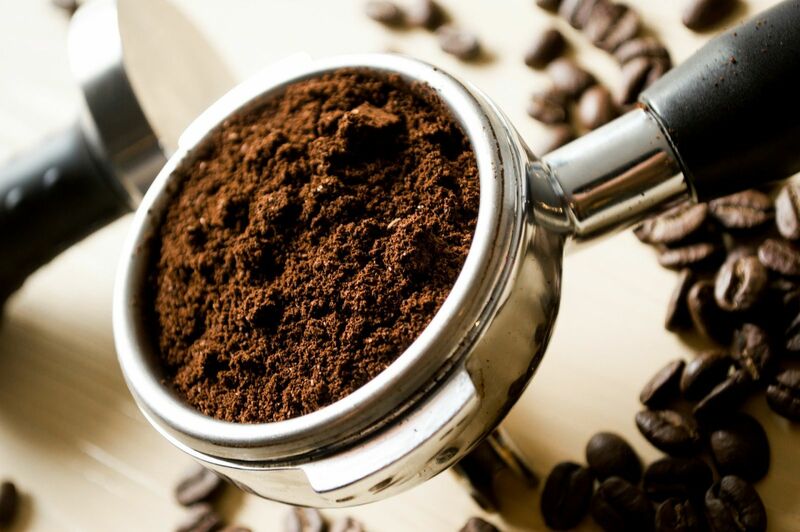Coffee Prices Slip on Brazilian Real Weakness and Increased Vietnam Coffee Exports

May arabica coffee (KCK24) this morning is down -2.25 (-1.18%), and May ICE robusta coffee (RMK24) is down -69 (-1.94%).
Coffee prices this morning are trading lower. Weakness in the Brazilian real today is undercutting arabica coffee prices as the real (^USDBRL) dropped to a 1-week low against the dollar. The weaker real encourages export selling from Brazil's coffee producers. Robusta coffee prices are sliding after Vietnam's agriculture ministry today reported that Vietnam's Q1 coffee exports rose +44% y/y to 799,000 MT.
On Wednesday, arabica coffee rose to a 3-week high, and robusta posted an all-time nearest futures high on the outlook for smaller coffee supplies. Robusta coffee prices rose to a record high Wednesday after the Vietnam Coffee Association on Tuesday said that Vietnam's 2023/24 coffee exports could drop -20% y/y to 1.336 MMT as dry weather reduced coffee yields and production.
Tight robusta coffee supplies from Vietnam, the world's largest producer of robusta coffee beans, are a major bullish price factor. Vietnam's General Statistics Office reported on March 6 that Vietnam's Feb coffee exports fell -32.8% m/m and -20.1% y/y to 160,584 MT, although total Jan-Feb coffee exports rose +16.2% y/y to 398,000 MT. Also, Vietnam's agriculture department projected Tuesday that Vietnam's coffee production in the 2023/24 crop year could drop by -20% to 1.472 MMT, the smallest crop in four years, due to drought. In addition, Marex Group Plc forecasts a global 2024/25 robusta coffee deficit of -2.7 million bags due to reduced output in Vietnam.
A negative factor for coffee is the recent above-average rain in Brazil, which eased dryness concerns. Somar Meteorologia reported Monday that Brazil's Minas Gerais region received 28 mm of rainfall in the past week, or 106% of the historical average. Minas Gerais accounts for about 30% of Brazil's arabica crop.
In a bearish factor, Rabobank on March 14 predicted a coffee surplus of 4.5 million bags for the upcoming 2024-25 marketing year, up sharply from the 500,000 bag surplus projected for 2023-24. On the bullish side, Rabobank reduced its 2023-24 production forecast by 3.9 million bags to 171.1 million bags, mainly because of downward revisions to production estimates for Indonesia and Honduras.
Coffee inventories have rebounded from historically low levels. ICE-monitored robusta coffee inventories on February 21 fell to a record low of 1,958 lots, although they recovered to a 2-month high of 3,047 lots today. ICE-monitored arabica coffee inventories fell to a 24-year low of 224,066 bags on November 30, although they recovered to a 9-3/4 month high Tuesday of 585,379 bags.
Larger coffee exports from Brazil are bearish for prices. Cecafe reported on February 14 that Brazil's Jan coffee exports jumped +45% y/y to 3.7 million bags. Brazil is the world's largest producer of arabica coffee beans. Separately, Brazil exporter group Comexim, on February 1, raised its Brazil 2023/24 coffee export estimate to 44.9 million bags from a previous estimate of 41.5 million bags.
The International Coffee Organization (ICO) recently reported that Jan global coffee exports rose +32.3% y/y to 12.62 million bags, and from Oct-Jan, global coffee exports rose +13.1% y/y to 45.125 million bags.
This year's El Nino weather event is bullish for coffee prices. An El Nino pattern typically brings heavy rains to Brazil and drought to India, negatively impacting coffee crop production. The El Nino event may bring drought to Vietnam's coffee areas late this year and in early 2024, according to an official from Vietnam's Institute of Meteorology, Hydrology, and Climate Change.
In a bearish factor, the International Coffee Organization (ICO) projected on December 5 that 2023/24 global coffee production would climb +5.8% y/y to 178 million bags due to an exceptional off-biennial crop year. ICO also projects global 2023/24 coffee consumption will rise +2.2% y/y to 177 million bags, resulting in a 1 million bag coffee surplus.
The USDA's Foreign Agriculture Service (FAS), in its biannual report released on December 21, projected that world coffee production in 2023/24 will increase +4.2% y/y to 171.4 million bags, with a +10.7% increase in arabica production to 97.3 million bags, and a -3.3% decline in robusta production to 74.1 million bags. The USDA's FAS forecasts that 2023/24 ending stocks will fall by -4.0% to 26.5 million bags from 27.6 million bags in 2022-23. The USDA's FAS projects that Brazil's 2023/24 arabica production would climb +12.8% y/y to 44.9 mln bags due to higher yields and increased planted acreage. The USDA's FAS also forecasts that 2023/24 coffee production in Colombia, the world's second-largest arabica producer, will climb +7.5% y/y to 11.5 mln bags.
More Coffee News from Barchart
- Cocoa Prices Consolidate Below Tuesday's Record Highs
- Sugar Prices Close Lower as Brazil Ramps Up Sugar Production
- Coffee Rallies With Robusta at a Record High on Shrinking Coffee Output in Vietnam
- Sugar Prices Move Lower on Strong Brazil Sugar Production
On the date of publication, Rich Asplund did not have (either directly or indirectly) positions in any of the securities mentioned in this article. All information and data in this article is solely for informational purposes. For more information please view the Barchart Disclosure Policy here.